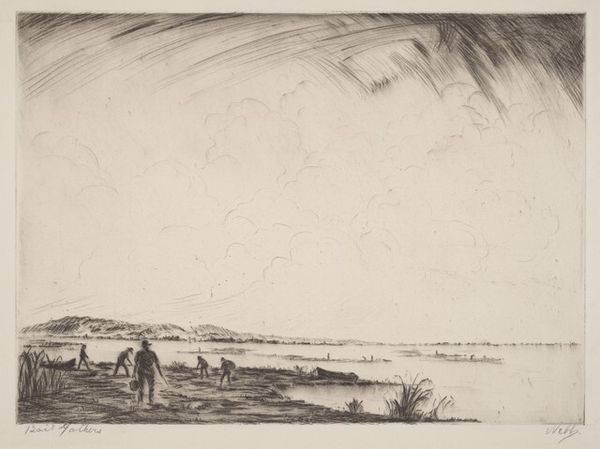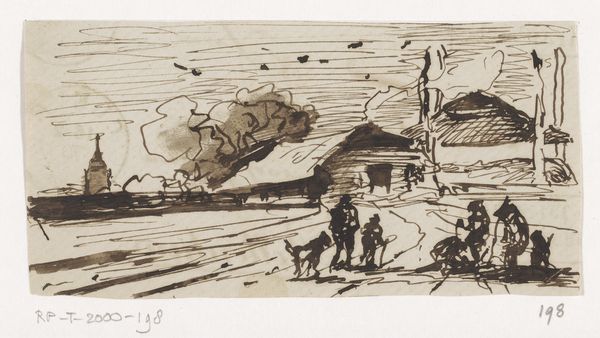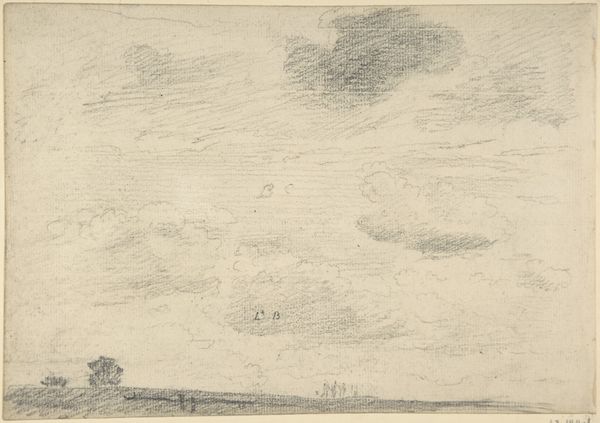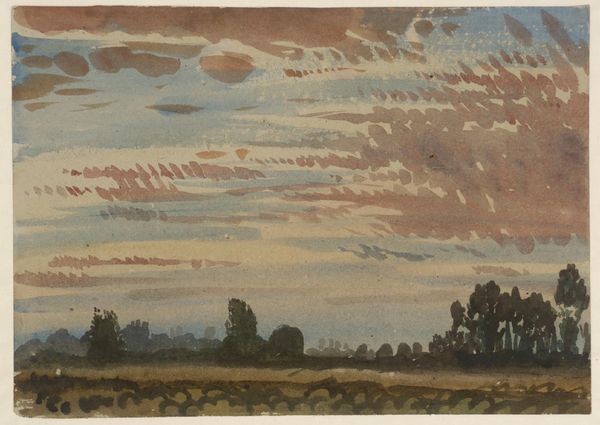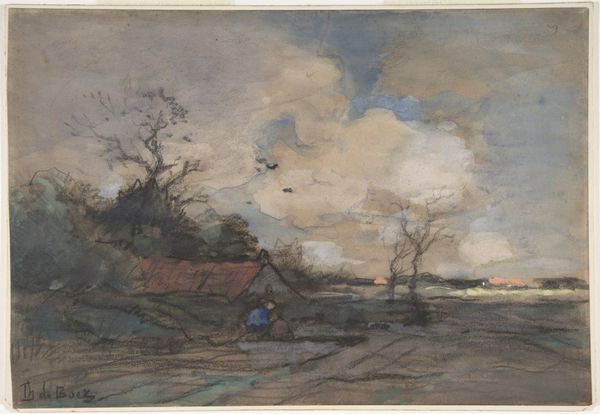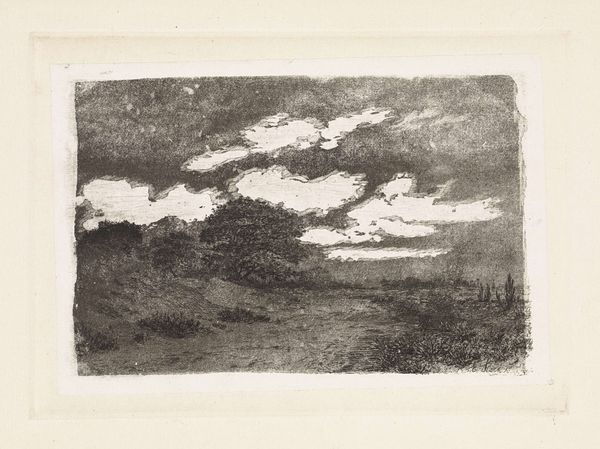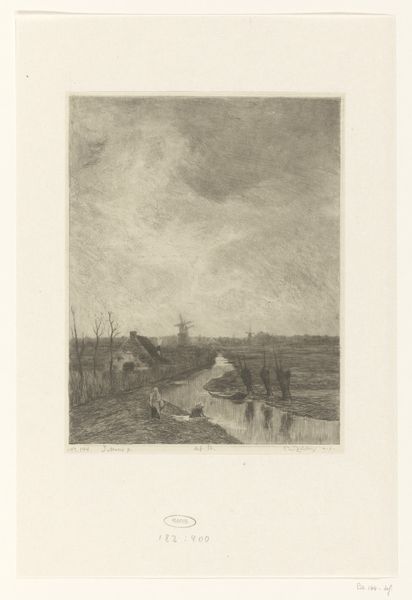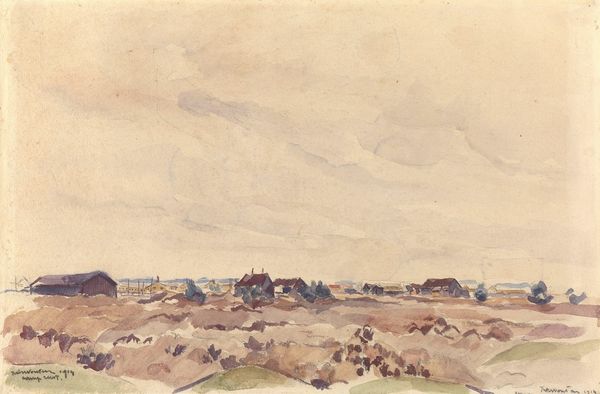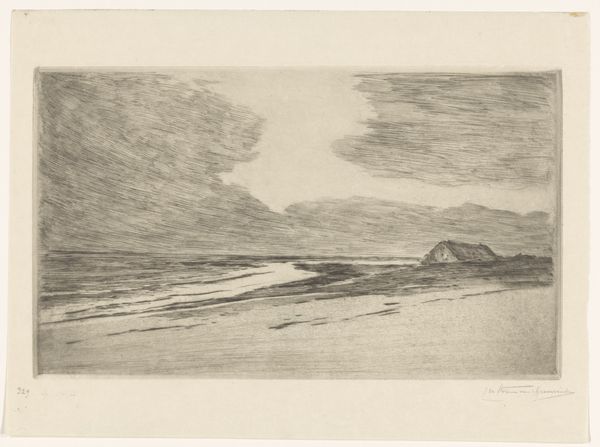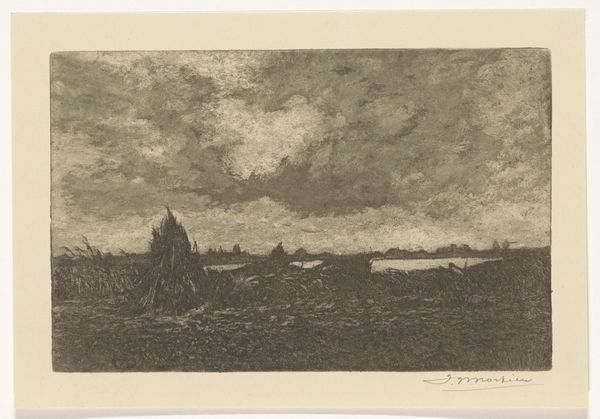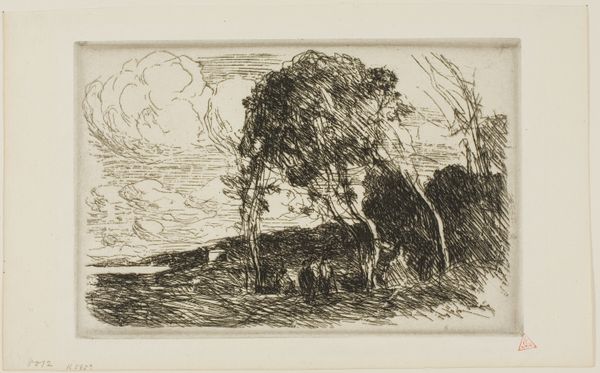
Dimensions: Sheet: 6 5/16 x 11 9/16 in. (16 x 29.4cm)
Copyright: Public Domain
Curator: "Moonlight," a watercolor and graphite drawing created circa 1855-1865 by Charles-François Daubigny. It’s currently held at the Metropolitan Museum of Art. Editor: Immediately, the gray palette conveys an atmosphere of melancholy. Note how the composition places the horizon line low, emphasizing the dramatic sky and the moon as almost another eye on the land. Curator: Precisely, this subdued coloration evokes the nocturne traditions from Romanticism. Note how Daubigny employs watercolor techniques, emphasizing tonal subtleties through layering and blending to capture the softness of moonlight diffusing through cloud cover. He was a proponent of en plein air—observing and capturing atmospheric effects on site. Editor: Yes, there’s definitely an intimacy here, an attempt to find the sublimity in observing. And this choice of landscape invites pondering our smallness under cosmic vastness and those wisps of clouds read like beckoning spirits almost obscuring the celestial. Even the thatched homes huddle under nature's spectacle as humble bystanders, connected to ancestral lives linked by light. Curator: Absolutely. Daubigny transforms what could be a simple countryside scene into an evocative landscape of both material and emotional resonance. He captures an experiential truth about rural life in a way few could express. Editor: Indeed. While simple in appearance, "Moonlight" engages with very complicated aspects about the relationship between humankind and the landscapes we are borne from, particularly as moonlight reveals more than light can say on its own. The shadows hide our human stories in that little cottage there... Curator: It’s interesting to consider, from a formal perspective, how Daubigny’s masterful understanding of light and shadow lends itself well to exploring the complexities of emotion—transforming an intimate experience into a universal expression of nature’s pervasive, haunting beauty. Editor: I appreciate the chance to consider the emotional range expressed in this modest work. What might at first seem bleak in mood becomes richer and more layered upon inspection, really illustrating the emotional depth possible using archetypal symbology that Daubigny captured with watercolor alone.
Comments
No comments
Be the first to comment and join the conversation on the ultimate creative platform.

